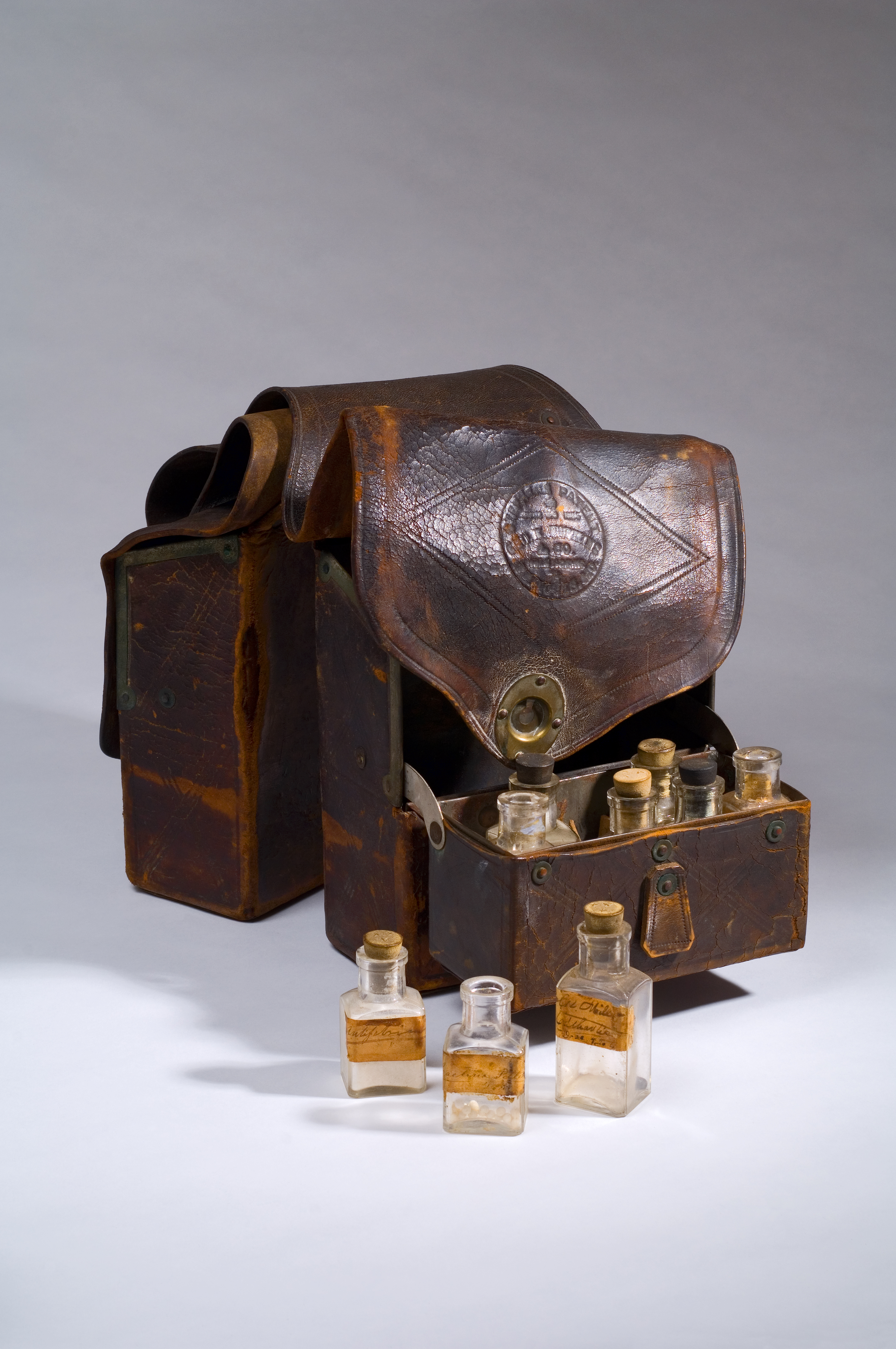The physician rides confidently on horseback down a dirt road, anxious to reach his destination. His patient, after all, has been waiting days for treatment.

He formulates a plan as his horse trots on. He will grind some of his most trusted ingredients into a fine powder using his pestle and mortar. He then will use a mold to shape this compound into a pill for the feverish farmer. With any luck, his patient will be back on his feet in a day or two.
Scenes like this were common in the 1800s, when house calls were the norm. Since doctors often traveled for days in rural areas before reaching their patients, it was crucial they pack everything they could possibly need to save a life.
Saddlebags, then, were vital. Physicians were careful to fill glass bottles with salts, aspirin, opiates and other ingredients, then place them inside the saddlebag’s compartments.
“They needed to be able to make solutions right on the spot,” said Andrew Bain, who manages the Medical Artifact Collection of Health Sciences Library’s Special Collection and Archives. “They became compounding architects.”
A medical saddlebag dating back to the 1880s and manufactured by George P. Wapkins Company of St. Louis, Missouri, is one of about 6,500 pieces in the school’s Medical Artifacts Collection. While few specifics are known about the piece, a little detective work reveals a lot.
“You can tell from the stitching and the thickness of the leather that this was an expensive item,” Bain said. “It was intended to convey authority and be fashionable at the same time. The doctor who carried this wanted to communicate that he was professional, someone patients could trust.”
The collection’s detailed records were not started until 1982. Since the saddlebag came into the school’s collection prior to that, Bain can only guess the specifics of the piece.
“You are transported to a different place and time just looking at it,” he said.
Did you know?
This story first appeared in the Fall 2015 issue of the medical school’s alumni magazine, 12th & Marshall. You can flip through the whole issue online.
Physicians were often notified by telegram or by a messenger that services were needed. He might travel 25 to 30 miles – a full day’s ride – to treat patients suffering from tuberculosis, influenza or bacterial infections. They also were prepared to set broken bones, bandage wounds and deliver babies.
“We may not know the name of the doctor who owned this bag,” Bain said, “but we can imagine he brought comfort to a lot of people.”
By Janet Showalter